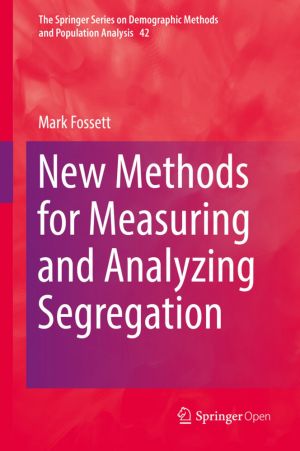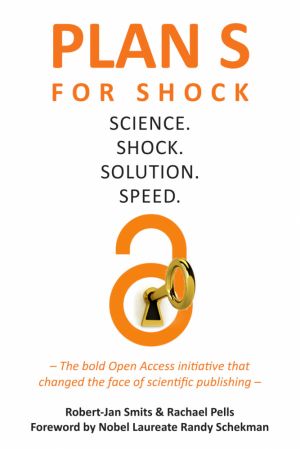Plan S for Shock
Science. Shock. Solution. Speed.
by Robert-Jan Smits, Rachael Pells
DescriptionTable of ContentsDetailsHashtagsReport an issue
On 4 September 2018, a bold new initiative known as 'Plan S' was unveiled, kickstarting a world-wide shift in attitudes towards open access research. For the first time, funding agencies across continents joined forces to impose new rules on the publication of research, with the aim of one day making all research free and available to all.
What followed was a debate of global proportions, as stakeholders asked: Who has the right to access publicly-funded research? Will it ever be possible to enforce change on a multi-billion dollar market dominated by five major players?
Here, the scheme's founder, Robert-Jan Smits, makes a compelling case for Open Access, and reveals for the first time how he set about turning his controversial plan into reality - as well as some of the challenges faced along the way. In telling his story, Smits argues that the Covid-19 crisis has exposed the traditional academic publishing system as unsustainable. 






Book Description
In a world where information has never been so accessible, and answers are available at the touch of a fingertip, we are hungrier for the facts than ever before - something the Covid-19 crisis has brought to light. And yet, paywalls put in place by multi-billion dollar publishing houses are still preventing millions from accessing quality, scientific knowledge - and public trust in science is under threat.On 4 September 2018, a bold new initiative known as 'Plan S' was unveiled, kickstarting a world-wide shift in attitudes towards open access research. For the first time, funding agencies across continents joined forces to impose new rules on the publication of research, with the aim of one day making all research free and available to all.
What followed was a debate of global proportions, as stakeholders asked: Who has the right to access publicly-funded research? Will it ever be possible to enforce change on a multi-billion dollar market dominated by five major players?
Here, the scheme's founder, Robert-Jan Smits, makes a compelling case for Open Access, and reveals for the first time how he set about turning his controversial plan into reality - as well as some of the challenges faced along the way. In telling his story, Smits argues that the Covid-19 crisis has exposed the traditional academic publishing system as unsustainable.
This open book is licensed under a Creative Commons License (CC BY-NC). You can download Plan S for Shock ebook for free in PDF format (11.4 MB).
Table of Contents
Chapter 1.1
Welcome to the world of academic publishing
Chapter 1.2
What exactly is open access anyway?
Chapter 1.3
Why OA?
Chapter 1.4
Academic publishing: a brief history
Chapter 1.5
The internet and OA: the early pioneers
Chapter 1.6
The Wellcome Trust and Gates Foundation pave the way for OA
Chapter 1.7
The Finch Report: taking OA to a political level
Chapter 1.8
Brussels gets involved; the momentum picks up
Chapter 1.9
Slow progress: the move towards OA stagnates
Chapter 1.10
Time for a radical intervention
Chapter 2.1
The open access envoy
Chapter 2.2
Forming a plan
Chapter 2.3
The impact on smaller publishers
Chapter 2.4
Warning bells
Chapter 2.5
Gaining allies
Chapter 2.6
The European tour
Chapter 2.7
Support arrives from the universities
Chapter 2.8
Gaining support from the younger generation of researchers
Chapter 2.9
Compromises, compromises
Chapter 2.10
The Coalition is born
Chapter 2.11
The first setbacks
Chapter 2.12
Putting the Science Europe face on; Plan S makes its first headlines
Chapter 2.13
To the movies
Chapter 2.14
October 2018: the US road trip
Chapter 2.15
You win some, you lose some
Chapter 2.16
Towards a Plan S implementation guidance
Chapter 2.17
Berlin 2018: a radical intervention
Chapter 2.18
Celebrating rebels
Chapter 2.19
Berlin take two: entering the lion's den
Chapter 2.20
Latin America speaks out
Chapter 2.21
Big interest from big players ... and another withdrawal
Chapter 2.22
The goodbye
Chapter 3.1
Changing the narrative
Chapter 3.2
Reimagining publisher business models
Chapter 3.3
The future of academic publishing
Chapter 3.4
Navigating the data-led future
Chapter 3.5
Plan S as a continued source of debate
Chapter 3.6
Open science: the new normal
Chapter 3.7
Taking stock of the legacy
Book Details
Title
Plan S for Shock
Subject
Sociology and Social Sciences
Publisher
Ubiquity Press
Published
2022
Pages
226
Edition
1
Language
English
ISBN13
9781914481161
ISBN10
191448116X
ISBN13 Digital
9781914481178
ISBN10 Digital
1914481178
PDF Size
11.4 MB
License

Related Books

As cities develop, more land is converted into impervious surfaces, which do not allow water to infiltrate. Careful urban planning is needed to ensure that the hydrologic cycle and water quality of the catchment areas are not affected. There are techniques that can attenuate peak flow during rain events and reduce the amount of metals, nutrients, a...

This book focuses on the fundamentals of plant physiology for undergraduate and graduate students. It consists of 34 chapters divided into five major units. Unit I discusses the unique mechanisms of water and ion transport, while Unit II describes the various metabolic events essential for plant development that result from plants’ ability to cap...

This book written by international experts in the field of educational innovation is a guide for universities to become world-class universities. It contributes to the current international intellectual debate on the future of higher education. It also tells the story of King Abdulaziz University in Jeddah (Saudi Arabia) and its effort to become a ...

This book introduces new methods for measuring and analyzing residential segregation. It begins by placing all popular segregation indices in the "difference of group means" framework wherein index scores can be obtained as simple differences of group means on individual-level residential attainments scored from area racial composition. ...

This open access book describes the three planning approaches and legacy impacts for the Olympic Games in one locale: the city of Los Angeles, USA. The author critically compares the similarities and differences of the LA Olympics by reviewing the 1932 and 1984 Olympics and by analyzing the concurrent planning process for the 2028 Olympics. The au...

This book demystifies the models we use to simulate present and future climates, allowing readers to better understand how to use climate model results. In order to predict the future trajectory of the Earth's climate, climate-system simulation models are necessary. When and how do we trust climate model predictions? The book offers a framewor...

